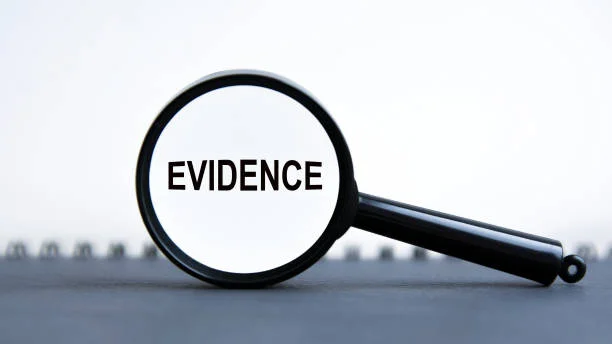Establishing negligence is at the heart of every personal injury claim. To receive compensation, the injured party must demonstrate that another person or entity acted carelessly or failed to meet a reasonable standard of care. Evidence serves as the foundation for proving this claim, providing the factual support needed to show what happened, why it occurred, and who is responsible. Without credible evidence, even a valid case can fall short in negotiations or in court.
Understanding Negligence
Negligence occurs when someone’s failure to act with reasonable care causes harm to another person. To prove negligence, four legal elements must be established:
- Duty of Care – The defendant owed a legal duty to act with reasonable caution under the circumstances.
- Breach of Duty – The defendant violated that duty through action or inaction.
- Causation – The breach directly caused the plaintiff’s injury.
- Damages – The plaintiff suffered measurable harm as a result.
Each element must be supported by clear and persuasive evidence. Even when fault seems obvious, evidence provides the factual foundation necessary to meet the legal burden of proof.
Get hooked all over again—browse Related Posts made just for you!
Why Evidence Matters
Evidence transforms allegations into credible claims. It connects the facts of the incident to the resulting harm and demonstrates how negligence directly caused injury. Insurers, judges, and juries rely on evidence to assess liability and determine fair compensation.
A strong evidentiary record does more than support the claim; it strengthens negotiation leverage and prevents disputes over the truth of events. Without it, opposing parties may challenge the severity of injuries, question causation, or even deny responsibility altogether.
Types of Evidence Commonly Used in Negligence Cases
Different forms of evidence can establish the link between negligence and harm. The most common include:
- Physical Evidence: Tangible items such as damaged property, torn clothing, or defective products can help demonstrate how the injury occurred.
- Photographs and Videos: Images of the accident scene, injuries, or property damage provide a visual record of events. Surveillance footage or dashcam recordings can be especially valuable.
- Medical Records: Documentation from healthcare providers verifies the nature, extent, and cause of the injuries. Treatment timelines also help connect the incident to the resulting harm.
- Witness Testimony: Statements from bystanders, co-workers, or other witnesses can corroborate the injured party’s account of what happened.
- Expert Opinions: Specialists such as accident reconstructionists, engineers, or medical experts can clarify technical issues and explain how the defendant’s actions caused the injury.
- Police or Incident Reports: Official records provide neutral documentation of what occurred and may include diagrams, witness statements, or officer observations.
- Financial Records: Pay stubs, bills, and receipts demonstrate economic losses, including medical expenses, property repair costs, and lost wages.
The combination of these materials builds a comprehensive narrative that shows not just what happened, but why it meets the legal definition of negligence.
Preserving and Gathering Evidence
Evidence can deteriorate or disappear quickly after an accident. For this reason, prompt action is essential. Steps such as photographing the scene, saving damaged items, collecting witness information, and obtaining medical evaluations should be taken as soon as possible.
In some cases, attorneys may issue preservation letters to prevent the destruction of key evidence. For example, if a business’s surveillance footage captured the event, the attorney can formally request that it not be deleted. Gathering this material early ensures that crucial details remain intact and admissible in court if needed.
How Evidence Influences Settlement Negotiations
In most personal injury claims, the strength of the evidence directly influences the value of a settlement offer. Insurance companies evaluate risk based on what can be proven. When liability and damages are well-documented, insurers are more likely to offer fair compensation rather than risk an unfavorable verdict at trial.
Conversely, weak or incomplete evidence gives insurers room to dispute the claim’s validity or minimize payment amounts. The clearer and more organized the evidence, the greater the negotiating power in achieving a favorable resolution.
The Role of Credibility
Not all evidence carries the same weight. The credibility of the evidence, and of the person presenting it, plays a major role in how persuasive it is. Consistent statements, verified medical reports, and reliable witnesses strengthen a case. Conflicting accounts or unsupported claims, on the other hand, can undermine credibility and weaken the argument for negligence.
An attorney’s role includes ensuring that the evidence presented is both relevant and credible. This involves verifying sources, organizing documentation, and preparing expert witnesses to explain complex information in a clear and compelling way.
When Evidence Is Disputed
It is common for the opposing side to challenge the validity or interpretation of evidence. They may question the accuracy of photographs, the reliability of witnesses, or the authenticity of documents. In such cases, the burden remains on the injured party to prove negligence by a preponderance of the evidence, meaning that it is more likely than not that the defendant’s conduct caused the injury.
Attorneys respond to these challenges through counterarguments, expert testimony, and corroborating materials that reinforce the original claim.
Why Legal Guidance Is Essential
Collecting, preserving, and presenting evidence requires experience and legal knowledge. A single mistake, such as mishandling a document or missing a filing deadline, can jeopardize the outcome of a case.
Legal professionals ensure that the evidence is admissible, relevant, and strategically used to support every element of negligence. They also coordinate with investigators, experts, and medical professionals to strengthen the case from start to finish.
Building a Strong Case for Accountability
Evidence is more than documentation; it is the framework upon which justice is built. Each record, photo, and testimony contributes to a complete picture of what occurred and why someone should be held responsible. A well-documented case not only increases the likelihood of success but also ensures that compensation reflects the true extent of the harm suffered.
To learn more about how proper evidence collection can impact your personal injury case, visit the Law Office of Robert Castro for additional information and professional guidance.
From curiosity to knowledge—Explore More and fuel your mind at 2A Magazine!







